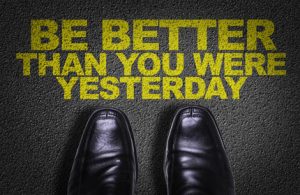 Lean is not just for manufacturers anymore, it’s an important concept for integration companies to start thinking about. Lean Methodologies bring together thinking about the delivery of customer value within the context of minimizing the use of resources in doing so. Fixating on efficiencies without an appreciation for the impact on the former is a recipe for disaster. Doing both together bolsters your value proposition and will increase margins as a desirable side effect. Who doesn’t want to go down that road?
Lean is not just for manufacturers anymore, it’s an important concept for integration companies to start thinking about. Lean Methodologies bring together thinking about the delivery of customer value within the context of minimizing the use of resources in doing so. Fixating on efficiencies without an appreciation for the impact on the former is a recipe for disaster. Doing both together bolsters your value proposition and will increase margins as a desirable side effect. Who doesn’t want to go down that road?
Improving Quality
By using templates for project tasks and checklists that are based on best practices, your teams can eliminate errors, identify and head off problems proactively, and improve the quality of your installations. Your teams won’t have to rely on innate knowledge of past projects that may have veered away from an ideal roll-out. Instead, they can rely on project task templates and checklists that are designed to produce optimal project outcomes and can foster the execution of repeatable processes that lead to installations done right the first time. Templated processes lead to a high degree of traceability, so if something goes wrong during the project or at the time of commissioning the system your team can quickly find the source, isolate what happened and fix the problem.
Reducing Lead Time and Eliminating Waste
Material planning is a tried and true time optimizer and a great way to employ Lean Methodologies within your organization. Using these methods within a project, allows your team to squeeze more margin from their jobs. Once your project team determines required delivery dates for major equipment they won’t have to further notify the procurement team to place orders and then check back with them to see whether the equipment has been ordered. The equipment is queued up for procurement at the optimal time for ordering and the PMO has complete visibility into what procurement is doing and when things are received for staging. If the project team doesn’t need the equipment until the 4th of the month of the project the demand for that equipment will only be visible x days in advance, while allowing procurement to override lead times when desired; this saves cash by avoiding having to tie up money on inventory that’s not needed until later in the job.
Working in conjunction, the procurement team has a centralized and complete view of demand for equipment for all projects and service work, which enables them to maximize purchasing power. They can determine whether they are getting close to a rebate or price break with certain vendors and push the planning horizon forward to increase their purchase order values. Your procurement team can make informed decisions to buy ahead if by doing so it decreases equipment costs and increases profit margins.
This method allows both parties to optimize their objectives, as well as being able to take advantage of added benefits such as reduction in restocking fees, air freight and obsolescence and all parties have visibility to whats happening from their primary viewpoints in the process.
Continuous Improvement
The key to effective efficiencies is good processes. A good process supports the delivery of value to the customer and allows you to measure the effort, which in turn enables you to evaluate whether or not the process can be made more efficient without giving up customer value. This review process should be done on a continuous basis; staff should be encouraged to think about continuous improvement on a regular basis, looking for ways to reduce waste, improve workflow, and deliver faster with improved quality.
Quite often the most successful organizations have transitioned this type of decision making down to the front line staff carrying out the work rather than keeping these decisions at the management level. Who better to uncover potential improvements than the people who know your organization’s workflow and customers so intimately?
However, it is the job of management to facilitate these ideas and turn them into new work methods. How to distill the good ideas into existing workflows in the context of what happens both up and downstream is the key to building momentum with continuous improvement. This becomes a key process on it’s own. Taking good ideas and inserting them into the flow without undue delay enables their effects to be seen and experienced in a reasonable amount of time. The goal is to make this process dynamic and ongoing, with positive change feeding more positive change.
Contact us to see how you can start implementing Lean Methodologies within your organization.

